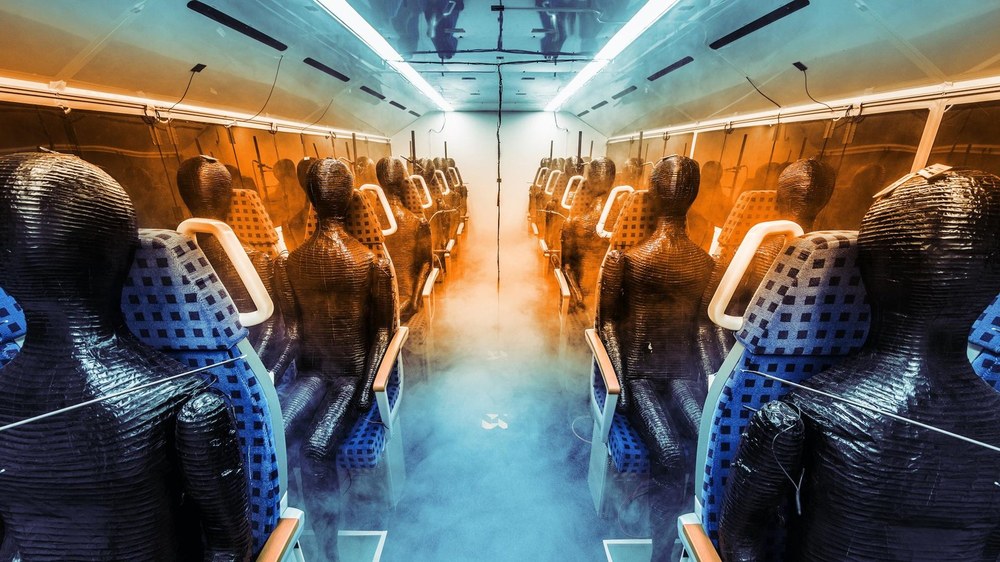Vehicle Ventilation and Air-Conditioning
In the "Vehicle Air Conditioning" group, we deal with interior air flows in aircraft cabins, rail and road vehicles. In addition to traction, air conditioning is one of the main consumers, consuming up to 50 % of the total energy in road vehicles and approx. 20 - 30 % in rail vehicles. The Environmental Control System (ECS), which also includes the aircraft's ventilation and air conditioning, is also the second largest energy consumer in aircraft. In addition to energy consumption, the thermal comfort of the passengers and the air quality in the passenger compartment form a triangle of requirements in which the optimum parameters for the various configurations are examined.

In our versatile and unique large-scale facilities (MKG, Do728, GZG, DIRK), we analyze air flows, particle dispersion and temperature fields using state-of-the-art experimental methods, which we are also continuously developing further. In parallel, computational fluid dynamics (CFD) simulations are used to measure the interior flows in digital twins in great detail and to carry out parameter variations.
In addition to application-oriented research in real, complex geometries, we also carry out a large number of basic experiments in order to be able to describe and understand the physical processes, e.g. turbulent mixed convection or condensation on surfaces, in more detail.
Our main research topics:
- Efficient and comfortable cabin ventilation
- Thermal comfort and air quality
- Condensation effects
- Interior flows
- Rail vehicle air conditioning
- Vehicle air conditioning
- Aircraft cabin ventilation
- Particle dispersion
